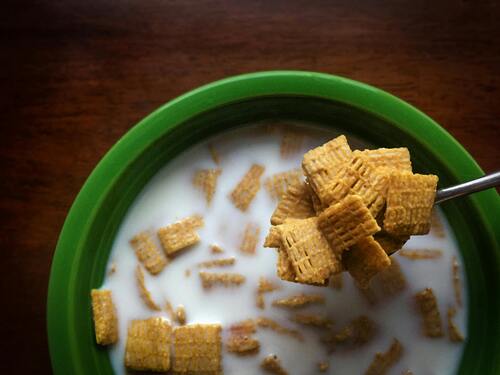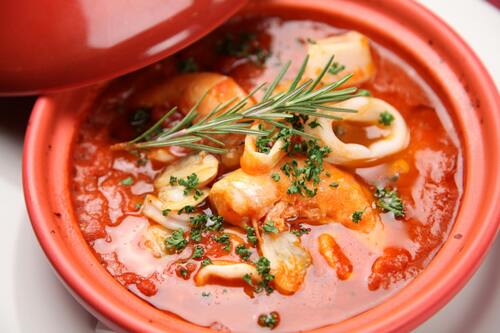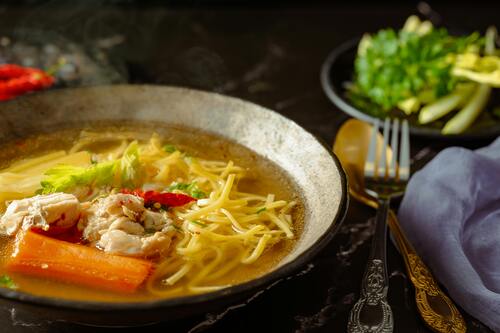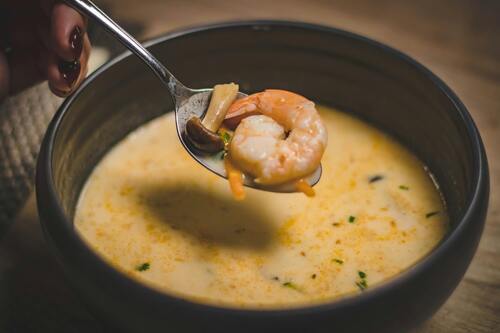Is cereal a soup or stew?

The characteristics of cereal, and the cultural ramifications of food classification will all be covered in this article. By looking at these factors, we want to make it clear whether cereal qualifies as soup, stew, or as a separate category.
Cereal’s Nature
The most popular type of cereal is made out of processed grains that are usually consumed with milk. Breakfast cereals, which are frequently enhanced with vitamins and minerals, can vary from sweet puffs to whole grain flakes. Cereal makes for a quick and easy meal when it’s served in milk. The texture and flavor of the mixture created when milk is poured over cereal are enjoyed. However, taking into account its constituent parts complicates the classification of cereal. Its culinary identity is called into question since, despite having both liquid (milk) and solid (grains) constituents, it does not fit the conventional definitions of soup or stew.
Cereal Ingredients

Cereal’s elements further highlight how it differs from soup and stew. Cereal is usually made up of grains like wheat, corn, or oats that have been processed into different shapes like clusters, flakes, or puffs. These grains can be fortified with extra nutrients, flavored, or sweetened. Cereal can be enhanced in taste and nutritional value by adding fruits, nuts, or seeds as toppings when mixed with milk. Cereal is distinct in its composition because, in contrast to soups and stews, which frequently contain a wide range of ingredients, cereal is largely centered on the grain component.
Cooking Methods and Techniques
Cereal preparation involves a very different set of cooking methods than soups and stews. The majority of breakfast cereals require little preparation at home because they are precooked and prepared for convenience. The usual technique is to cover the cereal with milk, which allows the grains to retain their texture while absorbing part of the liquid. Soups and stews, on the other hand, need longer cooking times and frequently involve simmering ingredients to build flavors. This variation in preparation techniques emphasizes cereal’s ease of use, presenting it as a quick dinner choice rather than a time-consuming meal.
Consistency and Texture

A key factor in differentiating cereal from soup and stew is texture and consistency. Stews are thicker, heartier, and frequently contain larger chunks of meat and vegetables, whereas soups are typically thinner and more liquid. Milk and cereal combine to create a special texture that is neither a hearty mixed nor a pure liquid. For a while, the grains maintain their crunch and shape, making for a unique eating experience. A liquid component is added by the milk, although the consistency is not as high as that of soup or stew. This variation in texture highlights how special cereal is as a food.
Cereal’s Nutritional Aspects
Cereal is frequently commended for its ease of use and possible health advantages, especially when it is produced from whole grains. For a healthy start to the day, a lot of breakfast cereals are fortified with vitamins and minerals. Cereal can provide a well-balanced meal with lipids, proteins, and carbohydrates when eaten with milk. However, the type of cereal and its additional ingredients can have a significant impact on the nutritional value. Cereal usually concentrates on the grain component, which may limit its nutritional richness in contrast to soups and stews, which can include a range of ingredients and flavors. This draws attention to yet another difference between cereal and the more intricate components of stews and soups.
Cereal’s Cultural Significance
In many cultures, cereal plays an important role, especially in Western breakfast customs. Convenience, speedy preparation, and the notion of a well-balanced breakfast are frequently linked to it. Because different brands and flavors appeal to different populations, breakfast cereal marketing has produced a cultural phenomenon. On the other hand, soups and stews could have cultural meanings related to coziness, warmth, and sharing meals. While soups and stews are frequently associated with ancient cooking methods that emphasize time and care in meal preparation, cereal’s cultural relevance reflects contemporary lives that place a premium on speed and convenience.
Common Cereal Varieties
There are many different types of cereal, and each has its own distinct flavors and textures. The variety of alternatives, which include sweet puffed rice and whole grain oat flakes, appeals to a broad range of consumers. While some cereals emphasize pleasure with their sweet flavors and vibrant packaging, others cater to health-conscious consumers with their high fiber and low sugar content. Cereal can be adapted to serve with different toppings, such as yogurt, nuts, or fruits, to suit personal tastes. This versatility highlights cereal’s appeal as a multipurpose food, even if it differs from soups and stews, which also have variations but are typically more complicated in terms of ingredients and preparation.
Culinary Views on Stew, Soup, and Cereal
From a culinary standpoint, cooks and foodies frequently group foods according to their components, preparation methods, and cultural importance. Although some could contend that because cereal contains liquid, it might be considered soup, most chefs agree that cereal belongs in its own category. Cereal, soup, and stew can be distinguished from one another by their various cooking techniques, textures, and component emphasis. By emphasizing the diversity within the culinary environment, an understanding of these classifications enhances our appreciation of each category.
In summary
Although there are some similarities between cereal, soup, and stew, they are all separate categories with various culinary uses. Soup and stew are distinguished by their cooking techniques, textures, and varied ingredient compositions, whereas cereal is essentially a breakfast snack made up of processed grains and a liquid component, typically milk. By highlighting the distinctive qualities of each dish, the examination of these variations enables us to value the variety of our culinary experiences. In the end, cereal differs from soup and stew in that it reflects a contemporary method of meal preparation that places an emphasis on ease and simplicity. Understanding these differences as we traverse the culinary landscape enhances our comprehension of food and its cultural significance while honoring the distinctive features that every dish contributes to our tables. 6:06 p.m.






